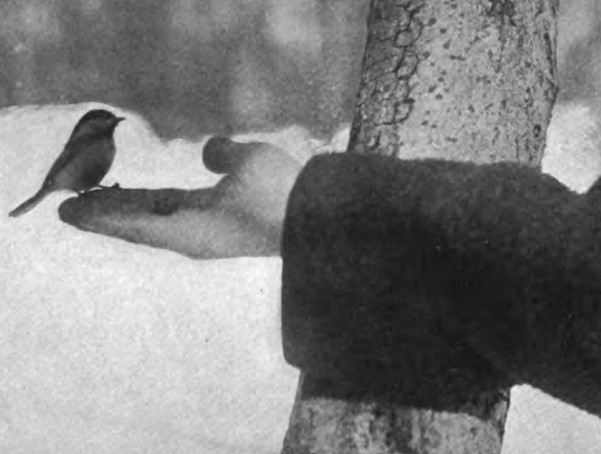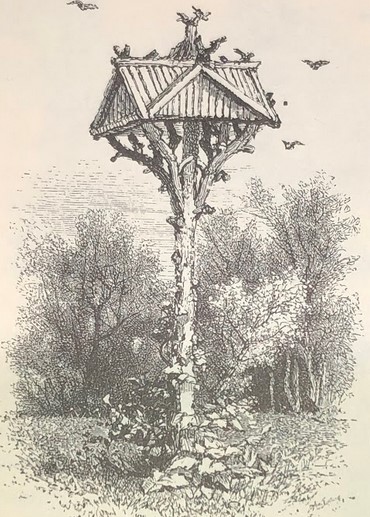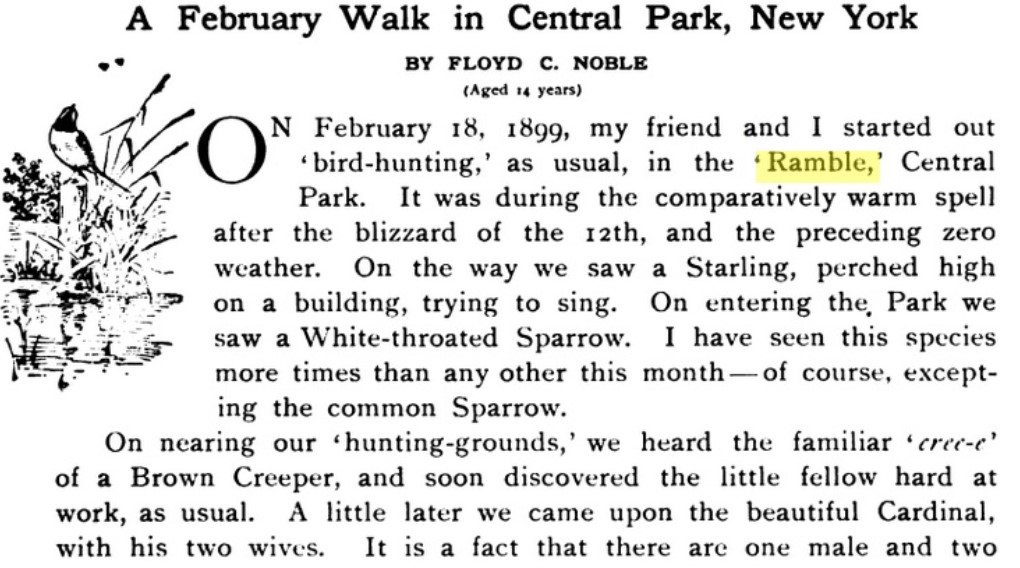Migrants and Natives
Park leaders and naturalists worried that native birds were too timid and vulnerable to survive in city spaces. But North American resident and migrant birds (who arrived via flyways between distant wintering and breeding spaces) found abundant habitats in the park, inspiring generations of bird-lovers.

Part of the reason Conklin, Schieffelin, and others promoted acclimatization was because they believed native birds were insufficient to enliven the park landscape and control insects. Acclimatizers chose birds like house sparrows, who had proven bold and adaptable in European cities and also could take advantage of diverse food sources, including human refuse. In 1877, Conklin stated, ”the number of native birds have been very much diminished in late years, owing no doubt to the rapid building up of the city around the Park.” Urban development removed shelter and food sources that many native species required. As built density marched northward on Manhattan, native birds lost habitats such as wetlands or forests, and even farmland.
But resident and migratory birds were thriving in the park, particularly in spaces like the Ramble and the North Woods where densely planted forests provided ample shelter and complex, thriving food webs. By 1868, the ornithologist George Lawrence tallied 129 wild bird species in the park, not counting swans or pheasants released by donors (though he did count introduced house sparrows and skylarks). Lawrence noted that many of the migratory visitors and rare species showed up in the Ramble particularly. He confirmed at least fifteen species of warblers during the spring migration, and speculated that more stopped there without being observed.
One popular belief about migratory birds as of the 1860s was that they disappeared in autumn because they were fleeing from cold weather. But scientists were untangling the “mystery of mysteries” of migration. By the 1870s, ornithologists understood migration as a complex behavior that bird populations evolved to take advantage of shifting geographies of food availability. New York and Central Park were ideally situated on the Atlantic Flyway, along which migrants coming from as far south as Ecuador and the Caribbean returned to breeding grounds in the north, taking advantage of prevailing winds.

Park leader Andrew Haswell Green helped establish the American Museum of Natural History just across Eighth Avenue from the Ramble. The natural history museum was just one of many New York institutions and organizations in which naturalists gathered to study nature. In the late 1800s and early 1900s, the professional ornithologists and bird-lovers of the Lyceum of Natural History, the Linnaean Society, and the Audubon Society also helped share knowledge about birds, often promoting the park as a venue for appreciating bird life.

Central Park continued to serve as an important migratory stopover for spring and fall migrations as it remained a green oasis offering shelter and food amid the cities and suburbs that sprawled along the east coast. Ornithologist Ludlow Griscom explained that the Ramble was “an oasis in a vast desert of city roofs, in which the tired hosts must alight to rest as the day breaks, and where the great variety of shrubbery and trees affords an ample food supply and shelter.” Beyond the park, the “world has changed, [birds’] landscape is inconceivably altered, it is surrounded by the incomprehensible hum of human activity, yet [each bird] clings grimly to its ancestral home.” By the time Griscom wrote these words in 1926, birders had spotted 163 species of birds in the Ramble.
Interested in learning more? Check out these resources.
Animating Central Park chapters 2 and 4
Mark Barrow, A Passion for Birds: American Ornithology After Audubon. Princeton: Princeton University Press, 1998.
Elizabeth Cherry, For the Birds: Protecting Wildlife through the Naturalist Gaze. New Brunswick, NJ: Rutgers University Press, 2019.
Christian Cooper, Better Living Through Birding. New York: Random House, 2023.
Robert Wilson, Seeking Refuge: Birds and Landscapes of the Pacific Flyway. Seattle: University of Washington Press, 2010.